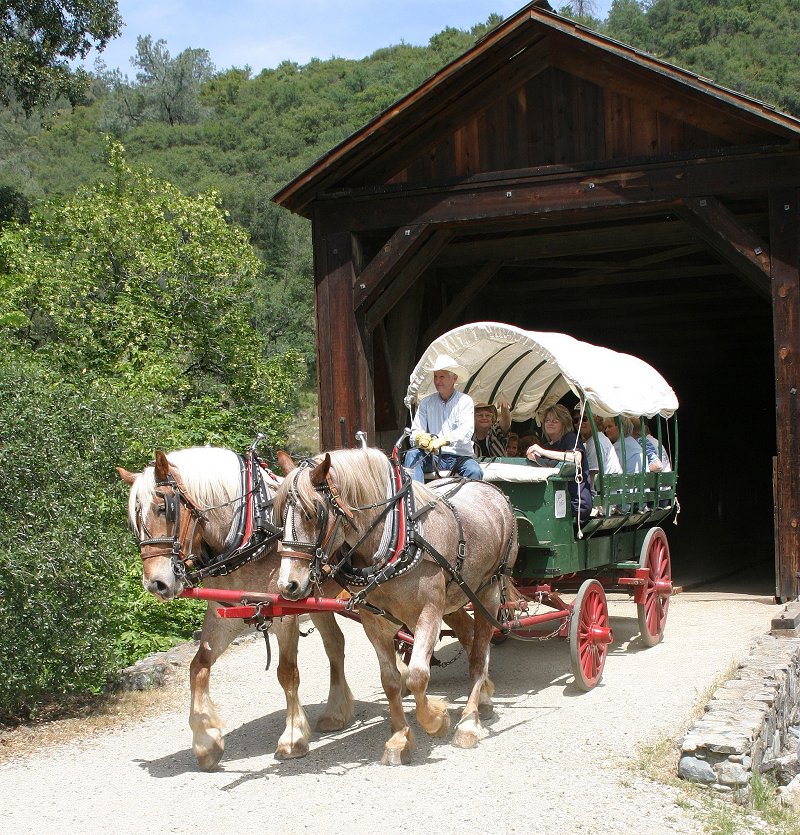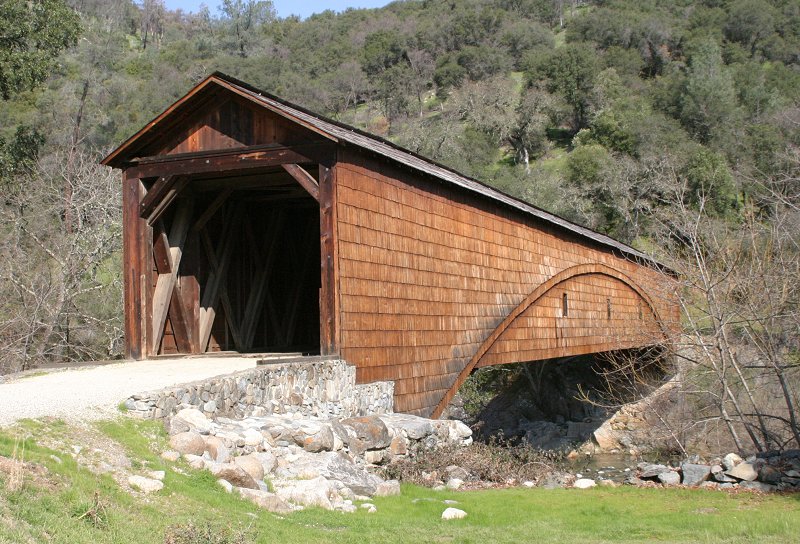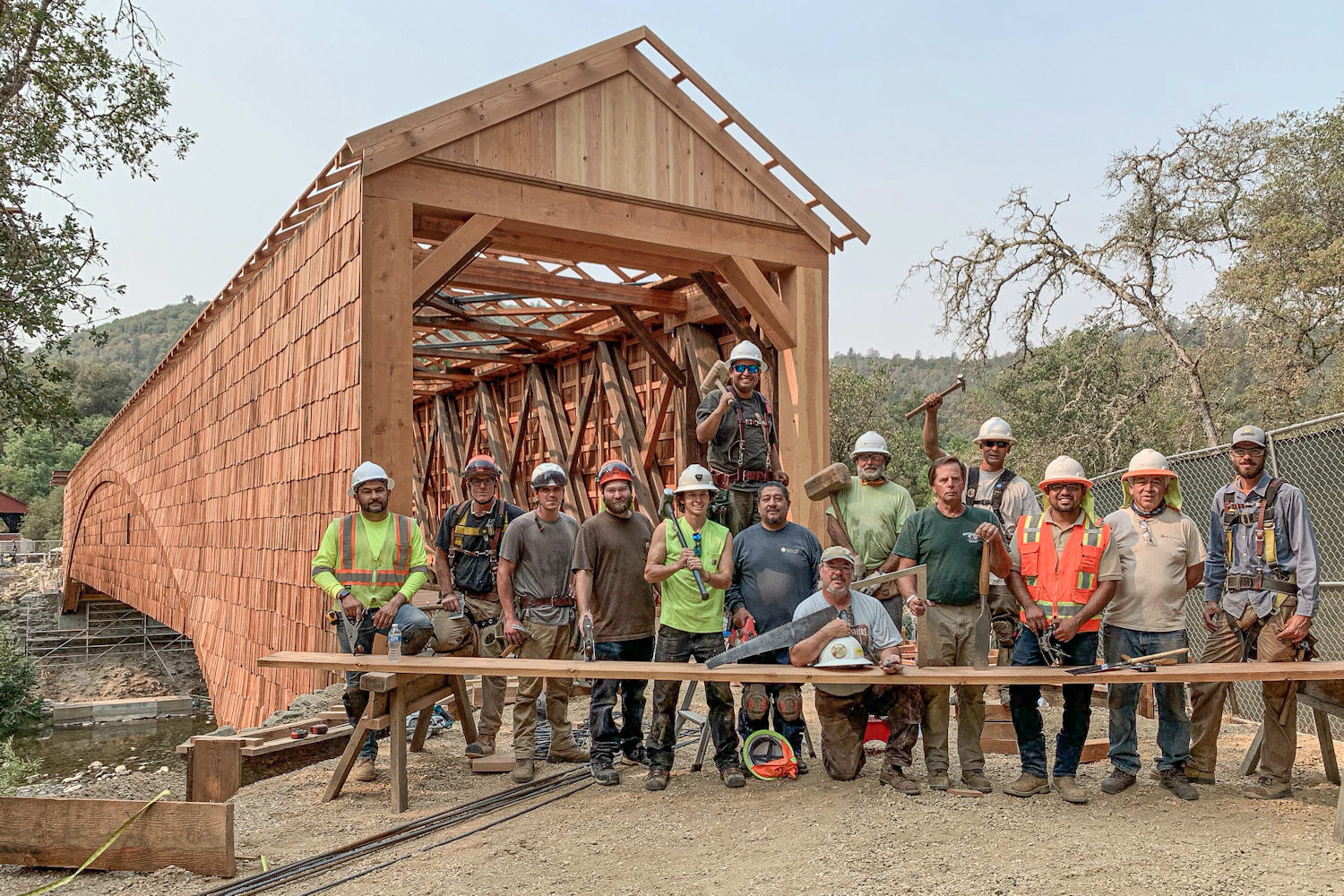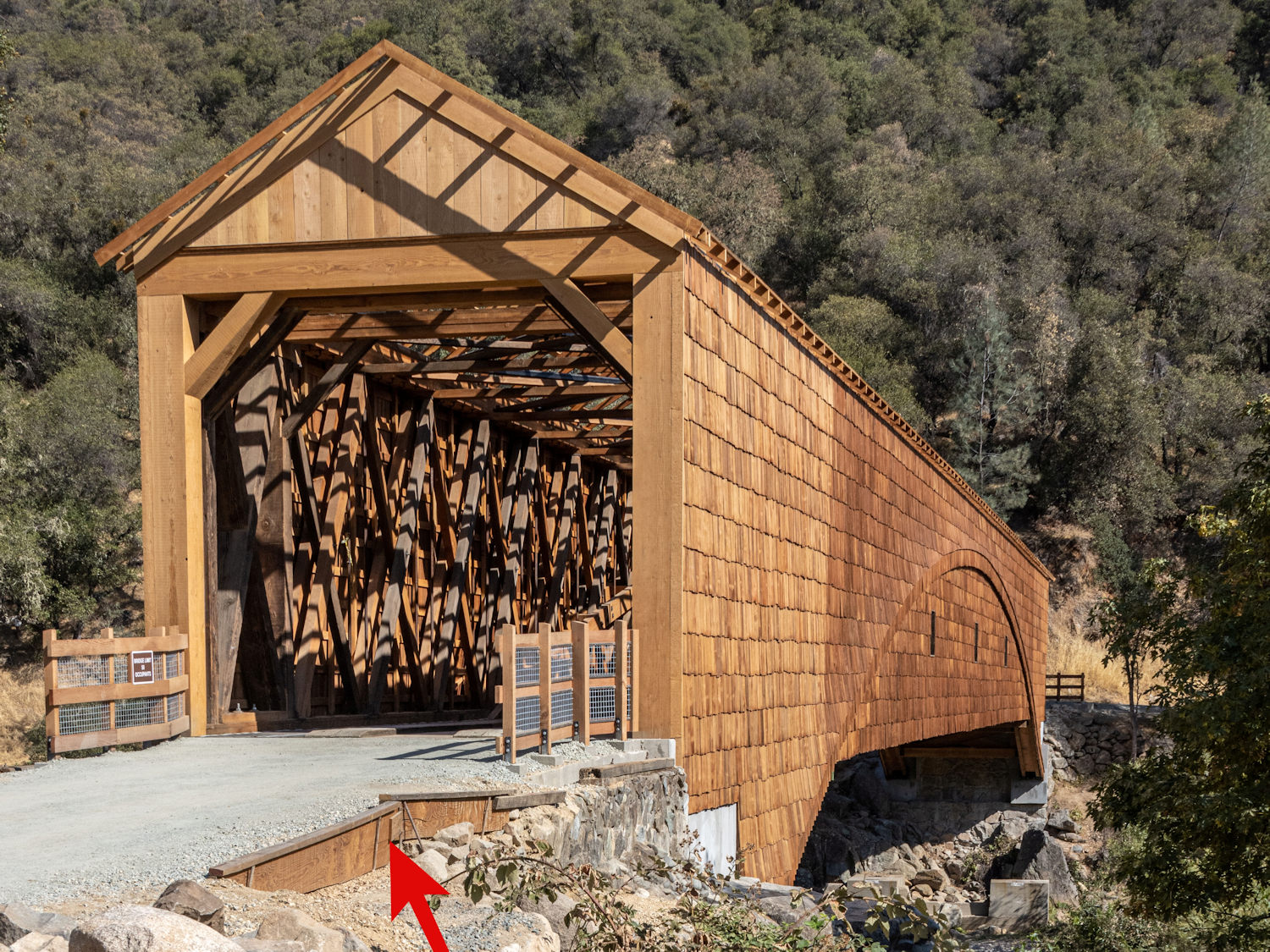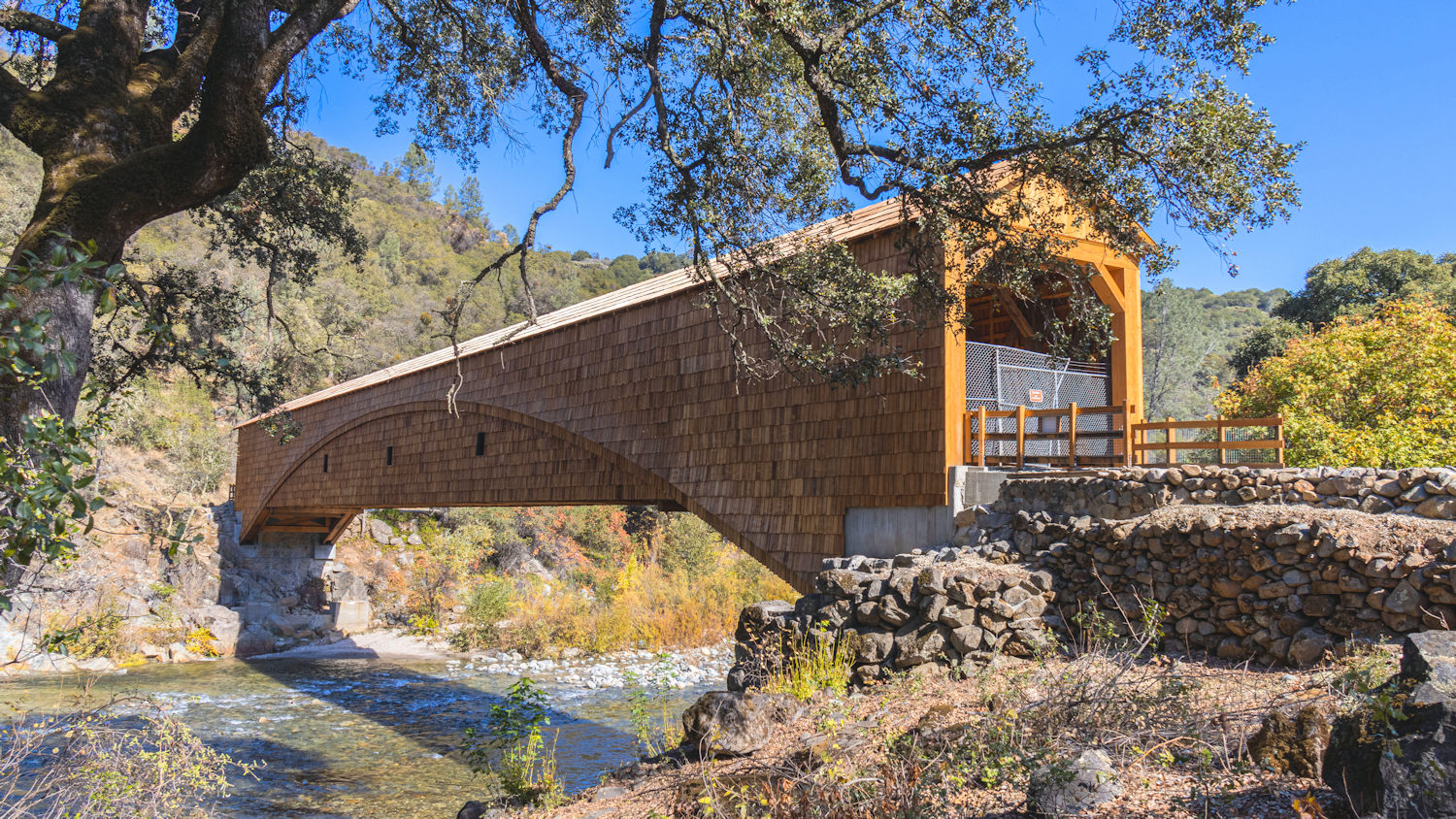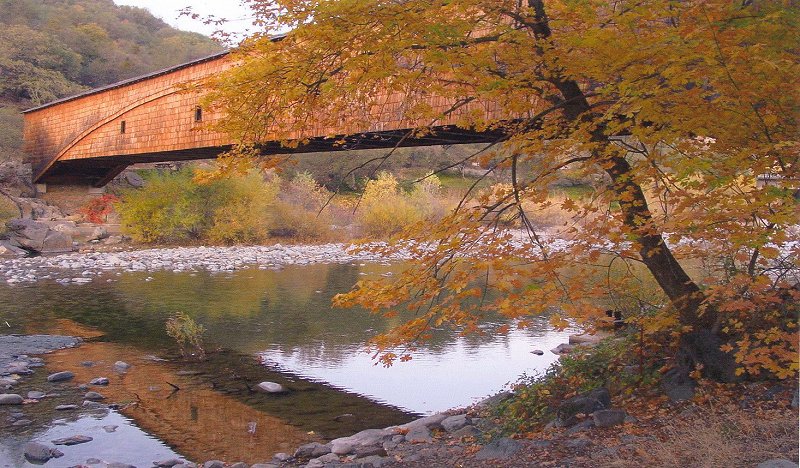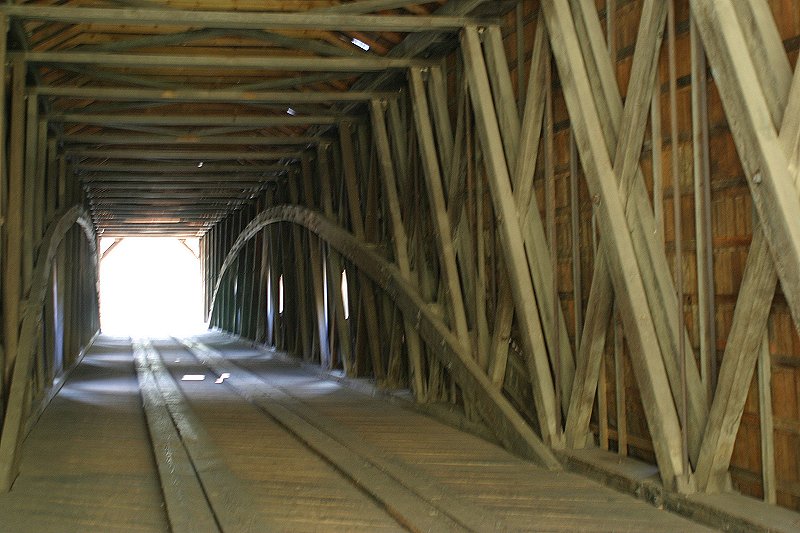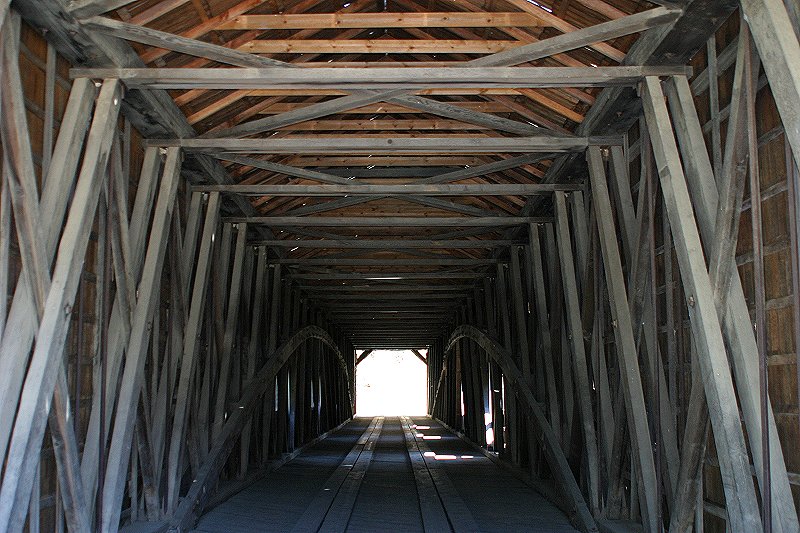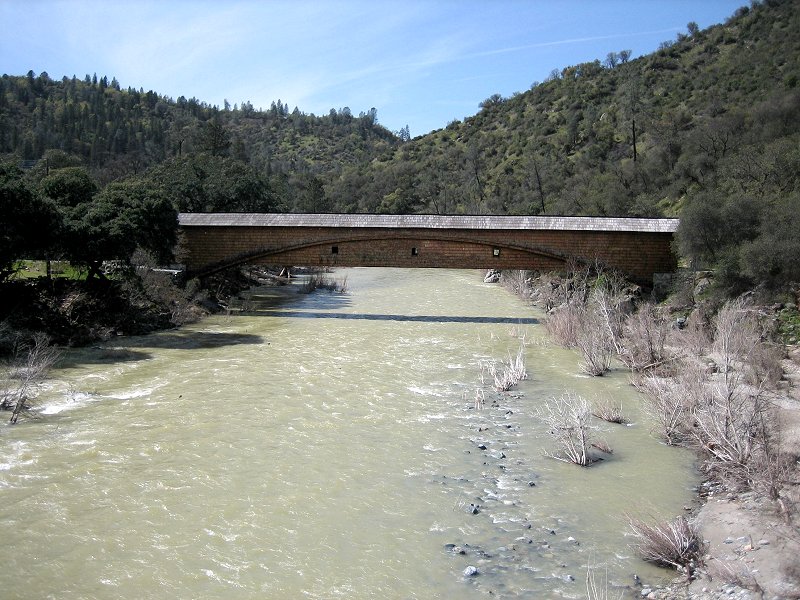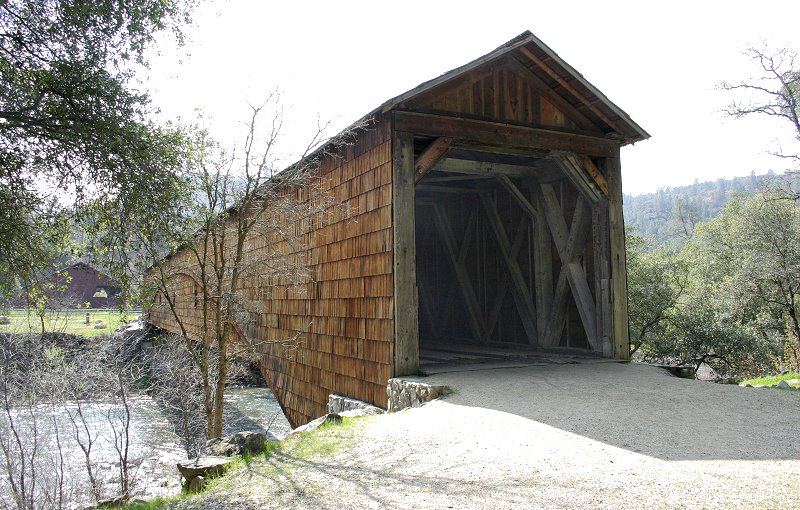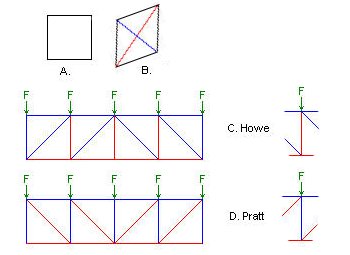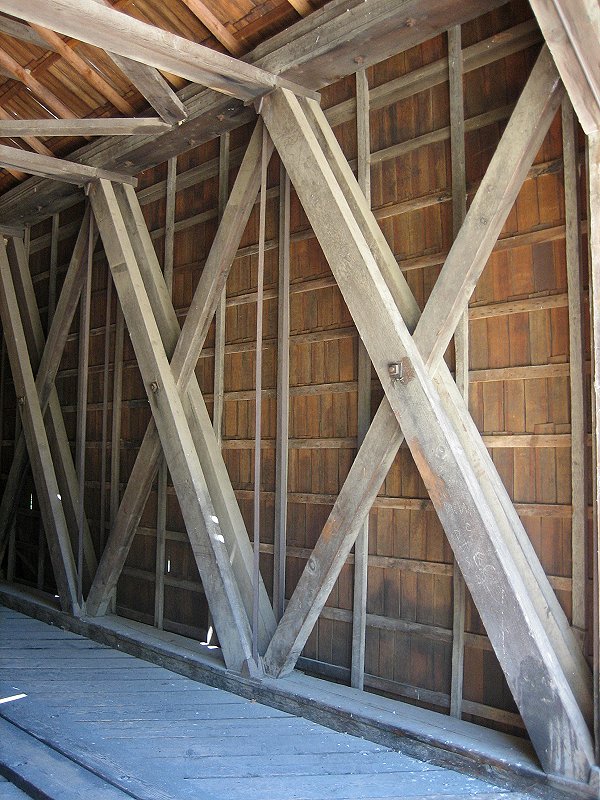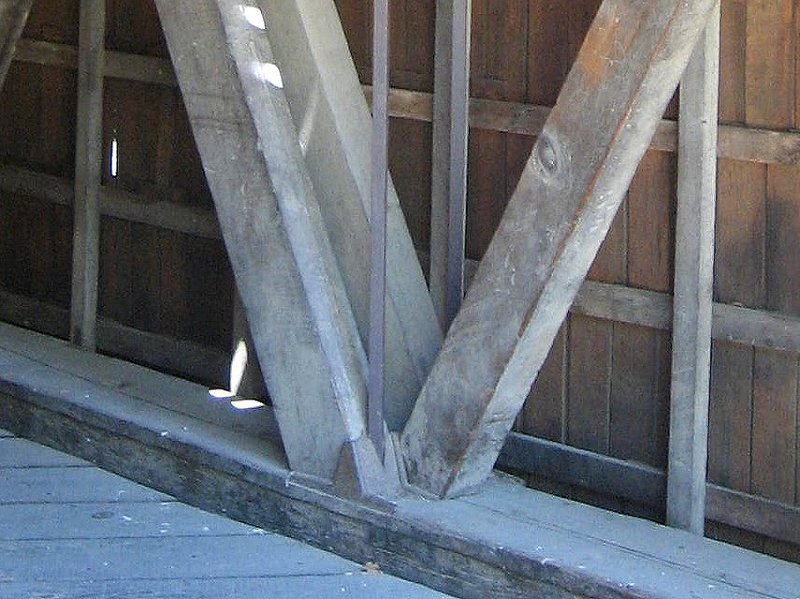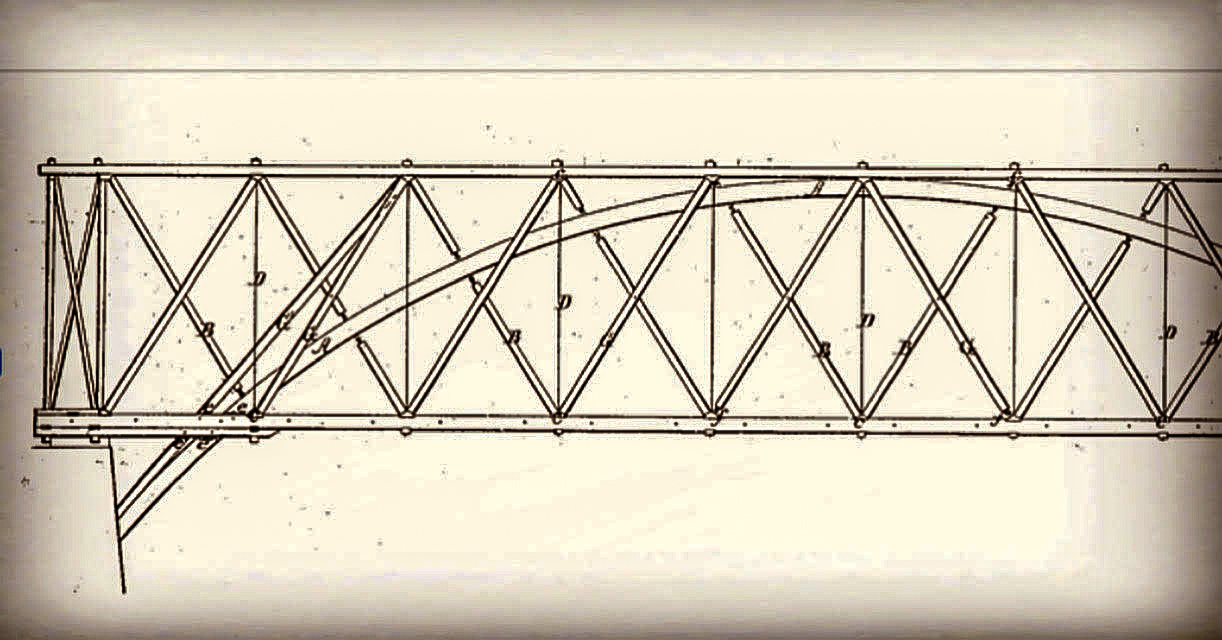
|
The present wooden bridge at Bridgeport was
built in 1862 by David I. Wood, to replace his 1850 bridge which washed
away in a
storm. At 229 feet (251 feet before the end walls were removed)
it
is
thought to be the longest single-span covered bridge in the United
States and perhaps the world. As with all such bridges, the
cover serves mainly to keep the rain off the load-bearing structure,
which would
otherwise soon rot from the moisture. The bridge was heavily damaged in 1997 by flood-stage flow of the river, which lapped at the bottom of the bridge and threw huge floating logs against the bridge until it was splintered and near collapse. This damage was soon repaired after heavy lobbying for funds by the community. Then in 2010 the bridge showed signs of severe rotting of the west top chord and near an abutment. By 2011 the damage was so severe that the bridge was closed even to foot traffic. Dave Anderson, then President of the South Yuba River Park
Association (SYRPA), decided to bring Bridge supporters together around
his dining room table in early 2013 to take action. They formed the Save Our Bridge Campaign Committee
chaired by Doug Moon, which led to another outpouring of community
support and resulted in initial funding for the restoration. The
project took place in two stages: 1) Stabilization, which was achieved
at a cost of $268,000 and 2) Restoration, with $1.3M in State and
Federal funding. The total cost of the Restoration phase of the project
would rise to over $6M when the final construction was completed in
2021. A groundbreaking
ceremony
was held on September 2, 2014 to thank the many people responsible for
obtaining the funding and to celebrate the immediate start of Stabilization Construction.
Short
video of construction. After years more of community-wide support
and lobbying, $6M+ of Restoration
Construction began in June, 2019. Comments on the video:
"This is a stunning account of an epic project. Beautifully done!" Courtney Ferguson, freelance columnist for The Union. "Absolutely amazing video. Thanks to you and the photography team." Ron Ernst, former President of SYRPA. The
bridge was formally reopened in a grand celebration at the bridge on
November 4, 2021. The celebration and school children's participation
in it are described in a 5-video playlist.
The last two videos are the restoration video above and installation of
the roof with beautiful arial views of the completed bridge. General covered bridge restoration reference, recommended by
Master Bridgewright Tim Andrews, with Bridgewright Will Truax: Another interesting text on early bridge designs is Covered Bridges and the Birth of American
Engineering by multiple authors and several editors,
including Christopher H. Marston. |
